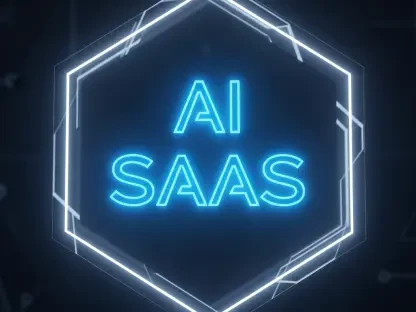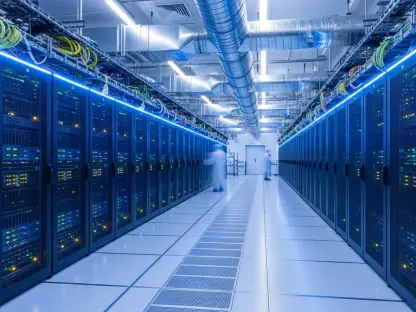Setting the Stage: The Rising Stakes of Cybersecurity
In an era where a single data breach can cost an organization an average of $4.5 million, as reported by IBM in 2023, the urgency to secure software development has never been more critical. Imagine a global corporation launching a new application, only to discover a vulnerability exploited within days, leading to massive financial and reputational damage. This scenario is not a distant possibility but a daily risk in today’s digital landscape. DevSecOps, the integration of Development, Security, and Operations, emerges as a pivotal solution, embedding security into every stage of the software lifecycle. This market analysis explores the trajectory of the DevSecOps industry, currently valued at $10.10 billion in 2025, and its projected surge to $26.21 billion by 2032. By examining key trends, drivers, and challenges, this discussion aims to illuminate why this approach is transforming cybersecurity and what it means for businesses striving to stay ahead of evolving threats.
Deep Dive into Market Dynamics and Projections
Current Landscape: A Market on the Rise
The DevSecOps market is experiencing significant momentum, driven by the escalating need for secure software amid rampant cyber threats. As of 2025, the market stands at $10.10 billion, with a robust compound annual growth rate (CAGR) of 14.6% anticipated through 2032. This growth trajectory reflects a global shift toward prioritizing security in development processes, a response to the increasing sophistication of attacks like ransomware and supply chain breaches. Organizations across industries are recognizing that traditional methods, where security is an afterthought, are no longer viable. The financial stakes are high, with breaches not only draining budgets but also eroding customer trust, making DevSecOps a strategic imperative for modern enterprises.
Key Drivers: Cybersecurity Threats and Regulatory Pressures
Fueling this market expansion is the relentless rise in cybersecurity incidents, which have become a boardroom concern rather than just an IT issue. The financial impact of data breaches continues to climb, pushing companies to adopt proactive measures through DevSecOps for early vulnerability detection. Additionally, stringent regulations such as the General Data Protection Regulation (GDPR) and the Health Insurance Portability and Accountability Act (HIPAA) mandate continuous security, especially in sectors like Banking, Financial Services, and Insurance (BFSI). These compliance requirements are not mere checkboxes but critical frameworks that shape business operations, driving demand for solutions that integrate security seamlessly into development workflows. The convergence of threat escalation and legal obligations creates a powerful catalyst for market growth.
Technological Catalysts: The Power of Generative AI
A significant force propelling the DevSecOps market is the integration of cutting-edge technologies like Generative AI (GenAI). This innovation enhances threat detection by analyzing patterns, identifying anomalies, and providing real-time response strategies, transforming how organizations manage risks. For small and medium-sized enterprises (SMEs), which often lack extensive security resources, GenAI tools have improved threat response times by 35%, based on industry data. Major tech providers are embedding these capabilities into their platforms, making advanced security accessible and efficient. However, the challenge lies in balancing AI automation with human oversight to avoid overlooking nuanced threats, highlighting the need for a hybrid approach to maximize benefits.
Market Segmentation: Diverse Adoption Patterns
Analyzing the market through segmentation reveals distinct adoption trends across deployment types, enterprise sizes, and industries. Cloud-based solutions dominate in 2025, offering scalability and cost-effectiveness that appeal to both SMEs and large enterprises, while on-premises options grow at a slower pace due to higher costs. Large enterprises currently hold the largest share due to their complex IT needs, yet SMEs are expected to exhibit the highest growth rate, leveraging affordable cloud platforms for compliance and security. Industry-wise, BFSI leads with its high-stakes environment, driven by digital banking risks, whereas retail and e-commerce show rapid expansion due to the surge in secure payment systems and mobile apps, illustrating the broad applicability of DevSecOps.
Regional Insights: Global Variations in Growth
Geographically, the DevSecOps market showcases varied dynamics that underscore different levels of digital maturity. North America commands a 45% share in 2025, bolstered by advanced infrastructure and early cloud adoption, particularly in the United States, where cybersecurity mandates drive investment. Meanwhile, Asia Pacific is set to grow at the highest CAGR through 2032, fueled by rapid digital transformation in countries like India and Japan, alongside 5G infrastructure security needs in telecom. Other regions, such as the Middle East & Africa, are emerging as key players with expanding cloud ecosystems, while Europe focuses on compliance-driven growth under strict data privacy laws. These regional disparities highlight the importance of localized strategies to tap into diverse market potentials.
Emerging Trends: Automation and Cloud Dominance
Looking ahead, automation powered by AI and machine learning stands out as a game-changer, streamlining vulnerability scanning and threat remediation, with organizations saving an average of $1.76 million per breach, according to recent industry findings. The shift toward cloud-native security tools, such as Kubernetes security and Cloud Security Posture Management (CSPM), continues to gain traction, offering flexibility that aligns with digital transformation goals. Regulatory evolution, especially in Europe, is expected to enforce stricter standards, further embedding DevSecOps into business frameworks. These trends suggest a future where intelligent, scalable solutions become the norm, reshaping how companies approach software security over the next several years.
Challenges Ahead: Bridging the Skill Gap
Despite the promising outlook, a significant hurdle looms in the form of a shortage of skilled DevSecOps professionals. Projections indicate that by 2027, a substantial portion of development teams may lack adequate security expertise, slowing adoption in complex environments. Transitioning to these roles often requires extensive training, posing a barrier for organizations aiming to integrate security into agile workflows. Addressing this gap through targeted upskilling programs and automation tools is essential to maintain market momentum, ensuring that technical capabilities keep pace with the growing demand for secure development practices.
Future Projections: A $26.21 Billion Horizon
The forecast for the DevSecOps market points to a valuation of $26.21 billion by 2032, a testament to its critical role in the digital economy. This growth is expected to be driven by sustained investment in cybersecurity, technological advancements, and the global push for regulatory compliance. As businesses increasingly adopt cloud solutions and automation, the market will likely see accelerated uptake among SMEs and in high-growth regions like Asia Pacific. While economic fluctuations could temper tech spending, the undeniable necessity of robust security in an interconnected world positions DevSecOps as a resilient and indispensable sector through the end of the decade.
Reflecting on the Path Forward
Looking back, the analysis of the DevSecOps market reveals a landscape shaped by urgent cybersecurity needs, technological innovation, and diverse global adoption patterns. The journey from a $10.10 billion valuation in 2025 to a projected $26.21 billion by 2032 underscores the transformative impact of integrating security into software development. Challenges like skill shortages are evident barriers, yet the dominance of cloud solutions and automation offers pathways to scalability and efficiency. For stakeholders, the next steps involve strategic investments in training to close expertise gaps and partnerships with leading vendors for tailored solutions. Businesses are encouraged to prioritize security as a core function by embedding it into CI/CD pipelines, while SMEs can leverage cost-effective cloud tools to compete on a secure footing. As the digital threat landscape continues to evolve, staying proactive through innovation and adaptability remains the key to harnessing the full potential of DevSecOps in safeguarding future growth.









